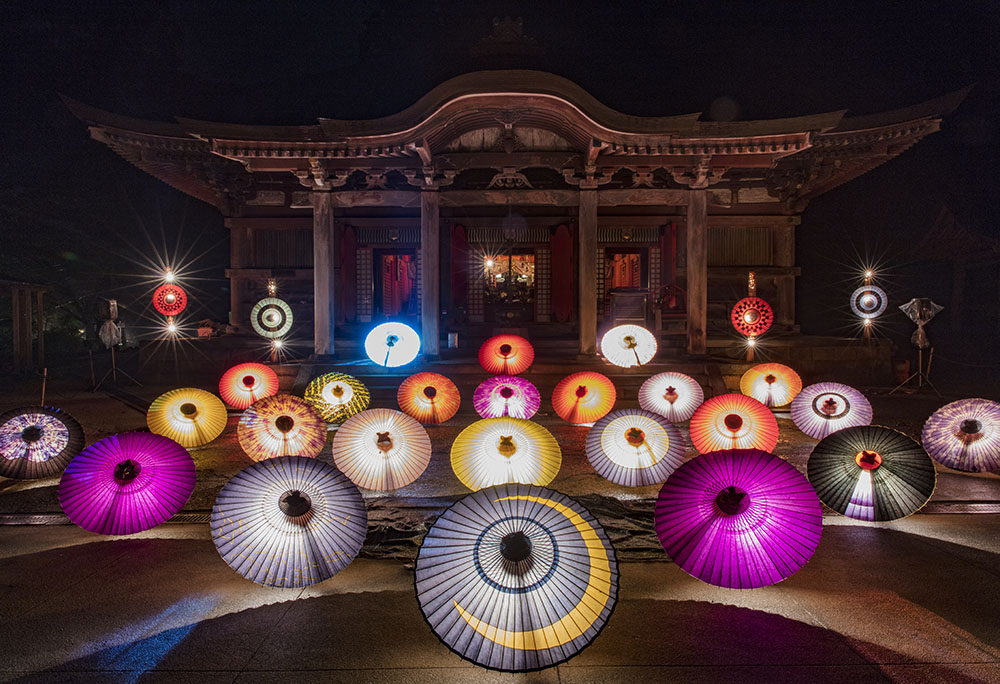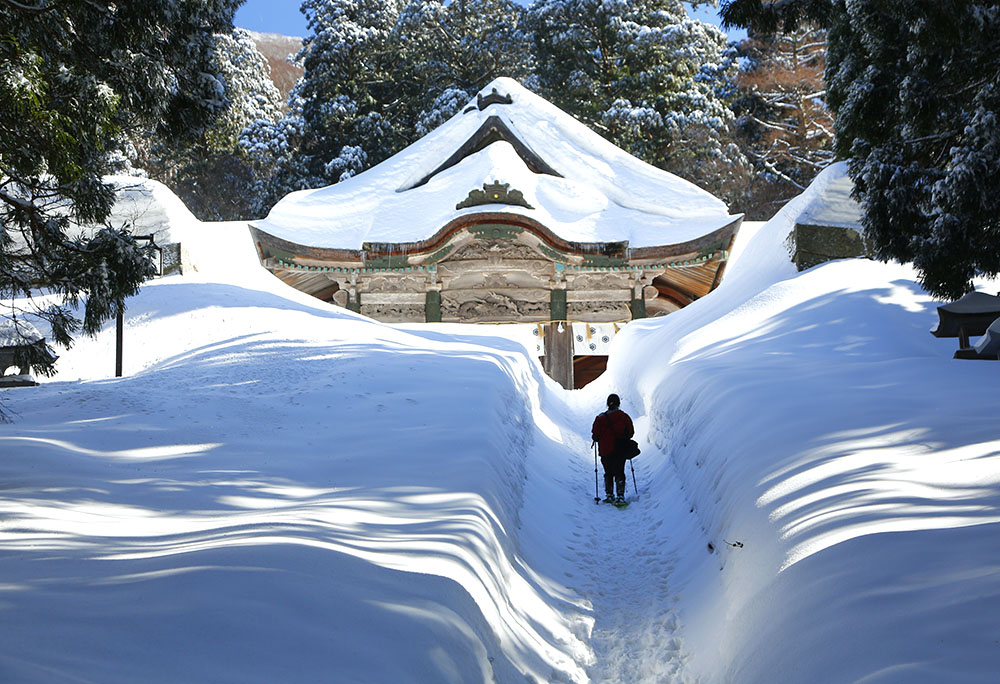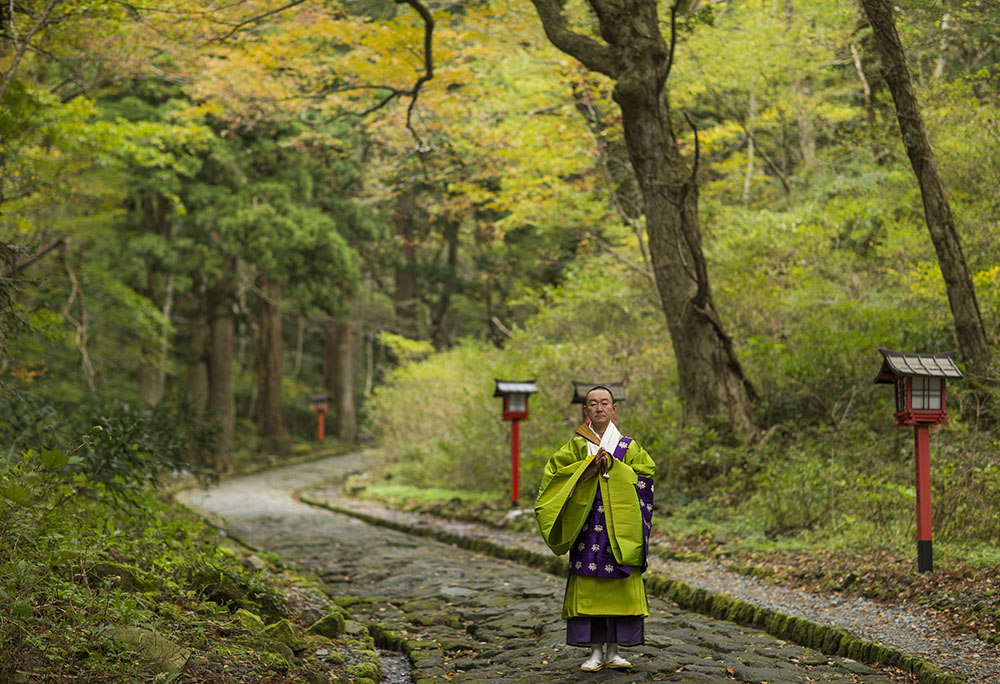
According to the Izumo no Kuni Fudoki (Record of Local Culture and Legends in Izumo), one of Japan’s oldest surviving texts compiled in 733, Mt. Daisen was since ancient times considered to be a residence of the gods, where mountain ascetics practiced austerities. In the early eighth century, the monk Kinren built a hall for the bodhisattva Jizo, founding Daisenji Temple. The temple subsequently expanded into one of the largest Buddhist communities in western Japan. In the twelfth century another famous monk, Kiko, began promoting Jizo as a special protector of cattle and horses. Farmers started bringing their livestock to the temple to receive Jizo’s blessings, a practice that soon developed into livestock trading as well. The Daisen market grew steadily, and by the late nineteenth century was expanded into the three largest livestock markets in Japan. The market closed in 1937.
The streets leading up to Daisenji Temple evoke the atmosphere of traditional Japan. The 700 m–long stone-paved sando, or main approach to the temple, is the longest path paved with natural stone in Japan. The approach is lined with historic inns and sacred sites and ends at the Okumiya or Mountain Sanctuary of Ogamiyama Shrine. This is the largest structure in Japan built in the gongen style, with separate worship and main halls connected by a corridor. On clear days, the view from the Bakuroza, the entrance of the area, encompasses the northern side of Mt. Daisen, the Sea of Japan, the Shimane Peninsula, Yumigahama Peninsula, and the Oki Islands.






